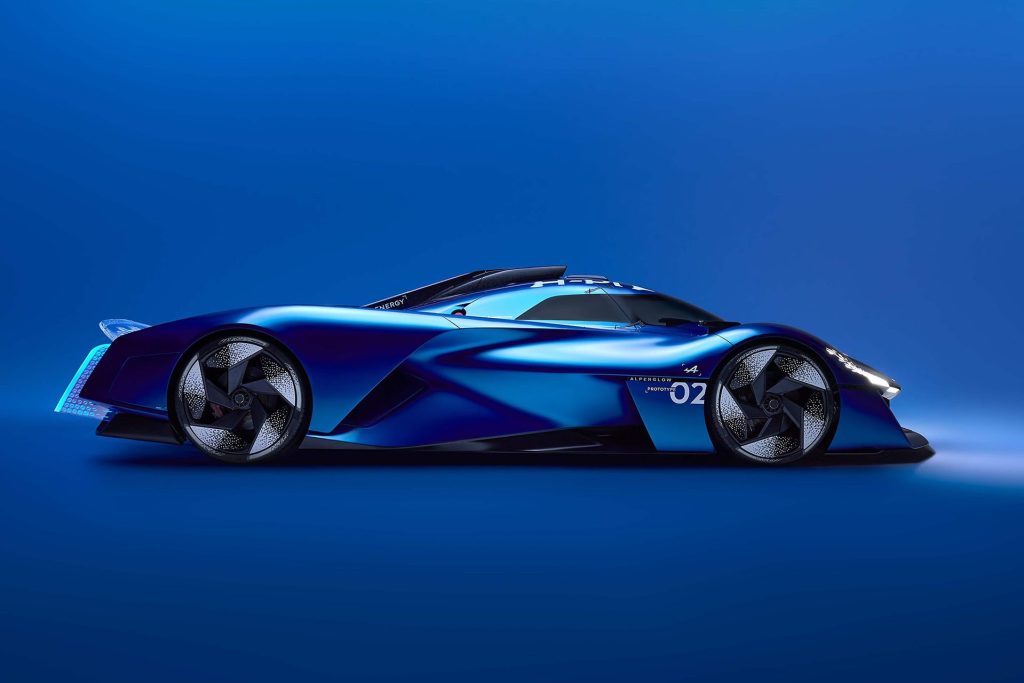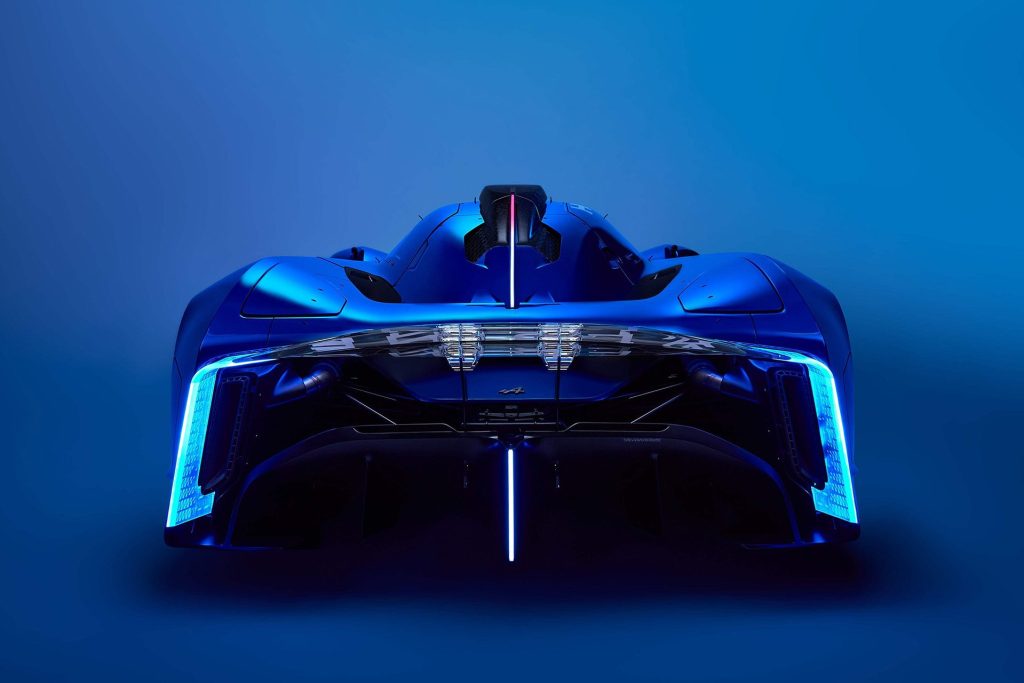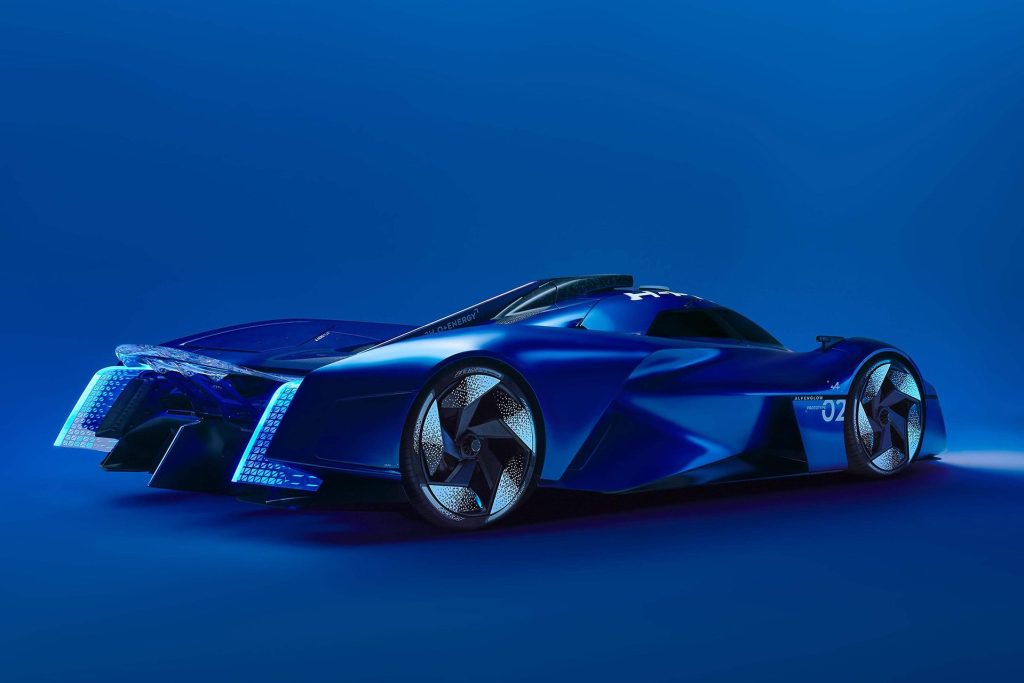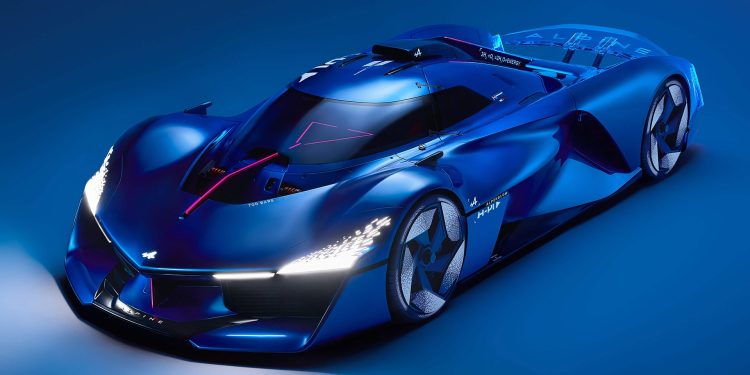Will Alpine launch a hydrogen-powered supercar eventually?
Words NZ Autocar | Images NetCarShow
Alpine is continuing with development of its hydrogen-powered Alpenglow concept, now evolved into the Hy4 prototype.

First revealed in 2022, the Alpenglow’s transformation into the Hy4 suggests Alpine is increasingly serious about hydrogen combustion technology. The Hy4, built on a Ligier LMP3 racing chassis, swaps the original single-seat layout for a more conventional two-seat set-up, suggesting a shift towards a road orientation.
The Hy4 was set to debut at the World Endurance Championship in Spa-Francorchamps, Belgium. However, an electrical fault prevented that. Alpine’s design chief, Antony Villain, is still optimistic. He said that the Alpenglow was always envisioned for both road and track ends.
Villain added that Alpine is considering a small production run of the hydrogen-powered supercar. He stressed that both hydrogen-combustion and battery-electric technologies are being pursued at present.

Development was always aimed at eventual production, he said, calling the Alpenglow more of a “programme” than a concept. Future versions will evolve with improved styling and added everyday utility. A critical part of this update is a new V6 hydrogen engine being developed entirely in-house by Alpine. It is set to replace the existing turbocharged 2.0-litre four-cylinder sourced from motorsport partner Oreca.
The new V6 should add both power and efficiency. The Hy4’s range currently stands at around 100km at race pace. Le Mans racers generally run 10–20 laps of the 14km circuit before refueling so added efficiency is an imperative.
Racing vehicles director François Champod stressed the engine will offer accessible, user-friendly power, unlike a high-revving F1 unit.
Engineering hurdles
There are still engineering challenges to overcome. Alpine’s hydrogen engineer, Pierre-Jean Tardy, explained that while hydrogen combustion produces similar engine response and sound to petrol, it behaves differently. Running lean for efficiency and low NOx emissions leads to cooler exhaust gases, creating challenges for turbochargers, especially increased lag. In addition, hydrogen’s wide flammability range complicates combustion control, increasing the risk of engine knock.
Mixing hydrogen gas with air uniformly is another major stumbling block, especially at high engine speeds. Hydrogen is injected at very high velocities, making it harder to mix properly and increasing the risk of abnormal combustion. Temperature management within each combustion chamber must also be uniform to avoid reliability issues.

Alpine acknowledges that its hydrogen-combustion technology is in its infancy. The V6 has only recently begun testing on a dynamometer. But the goal is to power the Alpenglow with hydrogen by year’s end. While Alpine is eyeing entry into the hydrogen-combustion class at the 2027 Le Mans 24 Hours, it has not made a formal commitment yet.
A road-going hydrogen car from Alpine remains a long-term possibility. Champod warned that the broader hydrogen infrastructure will determine its future. The current hydrogen refueling network can only support a limited number of vehicles.
However, Renault Group’s Hyvia venture, focused on hydrogen-powered vans, could aid infrastructure development. Trucks and light commercial vehicles (LCVs) are expected to lead the rollout of hydrogen stations, indirectly supporting niche vehicles like the Alpenglow.
Fuel storage on board remains a significant challenge. Hydrogen tanks require more space than petrol equivalents—over 350 litres versus 50 litres—posing packaging problems. Moreover, Alpine insists hydrogen use must be “clean” to justify its environmental benefits. That means only decarbonized hydrogen (with carbon capture) or green (via renewable-powered electrolysis).





